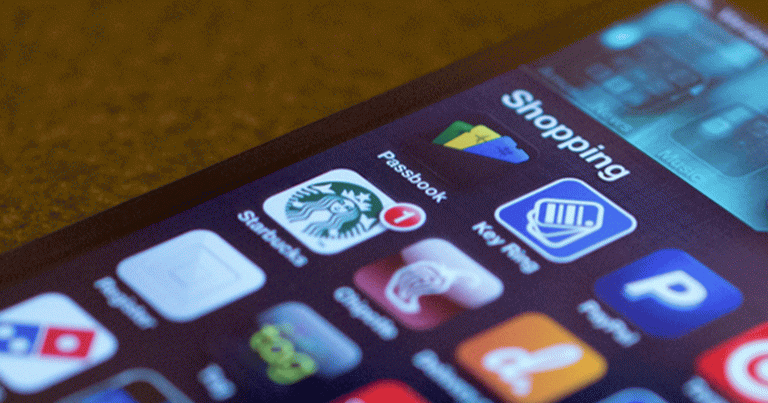
02/01/2016 | Digital Experience and Mobile | Thought Leadership
[Note: this is Part 3 of a three-part series. Read Part 1: The Fundamentals Every Retail Mobile App Needs and Part 2: Who is Your Mobile App Built For? This is Who it Should Be. ]
Although every retailer knows by now the enormous effort required to create a leading marketplace web experience, many are new to mobile apps and some assume that because apps are smaller, they should require less effort to produce. This is far from the case. Creating a rich enterprise experience within the confines of an app takes specialized strategy, planning, and resources. The biggest factor in retail mobile app failure is a misunderstanding of the nuances in mobile app usage and development and how this medium differs from the web and traditional desktop applications. This misunderstanding can result in a clunky, unappealing product due to deficient technical understanding in what makes a mobile app successful.
For example:
1. Just because it works on the website doesn’t mean it will work in an app: Despite the obvious differences between the two environments, there’s an assumption that if something works on the desktop, it will work in an app. This simplification doesn’t take into account the differences in how people use these mediums. Mobile users are looking at small screens and need to be able to complete tasks on-the-go. The pathway to completing an objective needs to be neat and short. For example, when the mobile checkout experience is not integrated with a native shopping cart, customers might be required to go through a second login to use a shopping cart on the website. This experience is negates the value of using the app at all.
2. Mobile technology is varied and fragmented: Mobile is not a singular channel but a hodgepodge of technologies in a fragmented landscape. What constitutes a good mobile experience is affected by differences between native apps vs. web apps, Android vs. iOS, Samsung vs. HTC, and so on. You need to design with these differences in mind and make strategic decisions that will satisfy the majority of your customers.
3. Session times are shorter: The amount of time a customer spends within a mobile app designed for m-commerce is far shorter than on a desktop retail site, so retailers must enable a speedy experience. When it comes to shopping, you want your customers to be able to browse and make purchases in your mobile app in under five minutes.
4. Mobile users face constant distractions that compete with your app experience: Customers are easily distracted on mobile devices by calls, incoming text messages, email, and social media notifications. These interruptions may take your customer away from your app unexpectedly. If they come back, they will be frustrated if they lose what they were doing before being pulled somewhere else. You need to plan for that.
5. Mobile is very personal: People view their phones as an extension of themselves and keep them within arm’s reach all of the time. Almost 90% of Millennials say that their phones never leave their side. Because mobile is very personal, people are less patient and forgiving of it. They can feel insulted if an app is too invasive or functionality is poor.
Finally, good mobile apps are not cheap to build, so cost can be a roadblock to success in a lot of retail app projects. Many companies do not yet consider mobile apps as a distinct channel. Although channels have blended together to form the omni-channel, each medium still necessitates careful planning. Building an effective enterprise mobile app requires specialized resources, and so does maintaining and enhancing the app throughout its life cycle. It would be unheard today to under-fund the website of a retail brand. Mobile is no different—this channel is here to stay.
So what does a successful retail app look like and how do you know you’ve got one?
One of the most popular metrics to evaluate a mobile app’s success is the number of downloads it has. This is great for measuring your marketing strategy, but it is not the most important metric for measuring app success because it fails to take into account all those users who only open your app once and throw it away. The critical success measure for a retail mobile app is how often it’s opened. This indicates whether your customers are actually using your app regularly. We’ve demonstrated this in consulting engagements with one of the most successful retail mobile apps on the market and confirmed it in conversations with retail executives.
To achieve a high number of opens from returning customers, a retail mobile app must deliver foundational value to your customers. What is the difference between an app that delivers poor value and an app that delivers great value? Here are two examples:
A poor mobile app experience hides the critical functionality your customers need the most and instead highlights content that leads users astray from what they opened the app to accomplish. For example, you might bury the check-out functionally behind screens loaded with product offers and notifications that customers are not interested in. Alternatively, you might force customers to repeat activities multiple times—such as filling in information about themselves that you already have in your systems. Critical UX flaws stall customers and cause them to waste valuable time inside your app. In the end, your app is not more convenient, helpful, or delightful than other channels, and might even be more frustrating. The result is poor usage leading to deletion.
A great mobile app experience remembers customers, knows they are rewards members, and recalls previous orders to help make the shopping experience easy and efficient. This app introduces discounts that customers expect as repeat buyers and encourages them to spend more in a way that thanks them for their loyalty and makes them feel special and privileged rather than harassed and invaded. It might send a thank you notification to customers after they leave a physical store location and offer discounts when they visit again. In general, the “great” mobile experience performs all the basic shopping functionality perfectly and only gets better the more the customer interacts.
Of course, you can’t do it all at once. Embarking on a journey to create a great mobile app experience can be daunting once you understand the scope of the program and what is at stake. AIM Consulting creates customized maturity models that can take your from a prototype of a new app to a rich and loyalty-focused mobile app experience. Every roadmap is custom, but the uniting idea is to lay a strong foundation to continually delight and empower customers.
Remember, at the most basic level, customers just want your app to work. They want to be able to complete tasks simply and efficiently on their mobile devices. The mantra that needs to power your mobile app strategy and development lifecycle is “easy and convenient” not “new and innovative,” because even the most amazing idea will fail if you don’t get the basics right.
Beyond that, it’s really about the attention and care you give to your most loyal customers. How can you leverage mobile technologies to make your top customers feel special and serve them in unexpected but delightful ways?
Finally, don’t measure your success by number of downloads. Measure your success by number of opens. How often are customers returning to use your app, especially your top, loyal customers? The better you delight them, the more this segment will grow.
If you’re still on the fence about whether or not a great mobile app experience is even necessary, keep this in mind: If you think Millennials have high expectations and are hard to impress, consider the touch-screen generation. Today’s toddlers and grade school kids are so accustomed to mobile devices that using interactive gestures like tap, swipe and pinch are second nature to them. This generation will grow up in a digitized world where non-digital, non-interactive experiences don’t even make sense.
And it will be only a few years before they are ready to shop with you. Are you ready to delight them?
AIM Consulting has expertise in digital experience and mobile, including strategy, design, and implementation of omnichannel and retail solutions.





